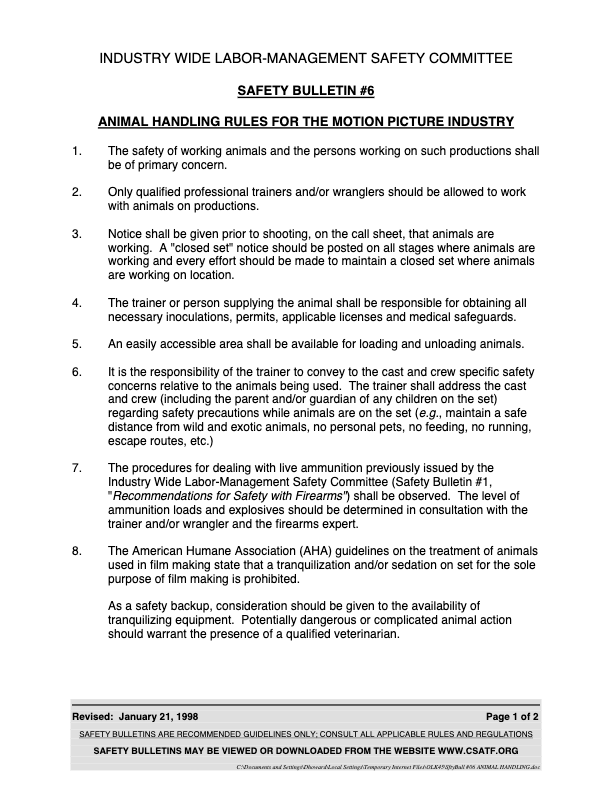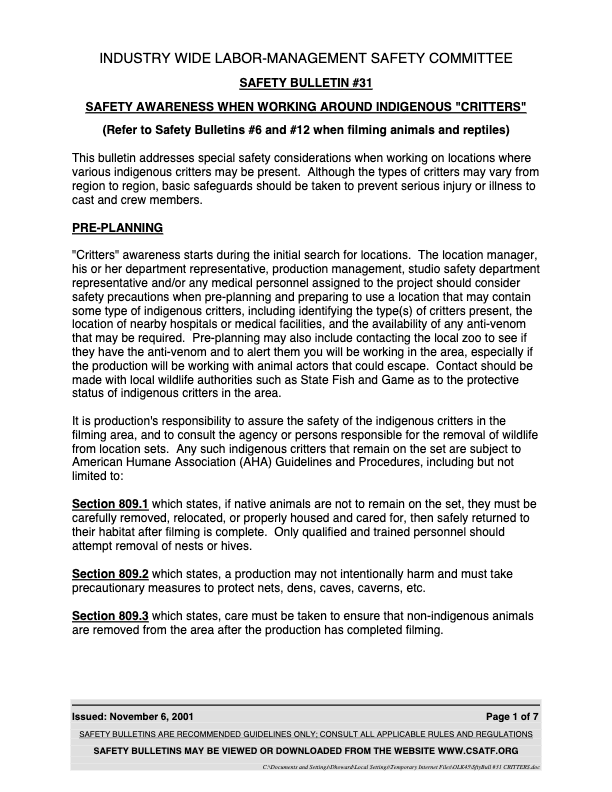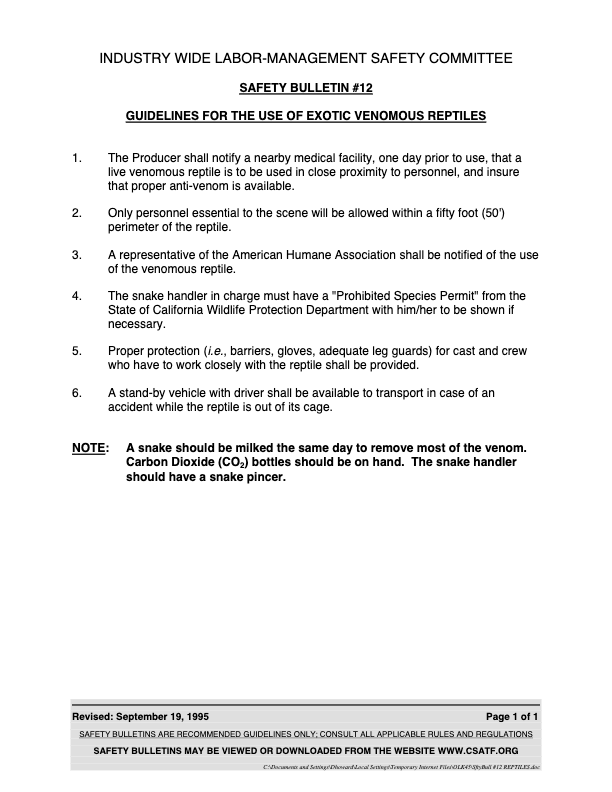The safety of working animals and the persons working on such productions shall be of primary concern. Animals are unpredictable and only qualified professional trainers and/or wranglers should be allowed to work with animals on productions. Defer to the animal trainers at all times and do not feed, pet, or play with any animal without the permission and direct supervision of its trainer.
For more information on this topic, please refer to this PDF from the American Humane Association:
Communication of safety information
- Notice shall be given prior to shooting, on the call sheet and safety bulletin, that animals are working.
- It is the responsibility of the trainer to convey to the cast and crew specific safety concerns relative to the animals being used. The trainer shall address the cast and crew (including the parent and/or guardian of any children on the set) regarding safety precautions while animals are on the set (e.g., maintain a safe distance from wild and exotic animals, no feeding, no running, escape routes, etc.)
- A “closed set” notice should be posted on all stages where animals are working and every effort should be made to maintain a closed set where animals are working on location.
Equipment safeguards
- An easily accessible area shall be available for loading and unloading animals.
- Equipment operated in conjunction with working animals should be in a safe operating condition as determined by the trainer and/or wrangler in conjunction with the property master.
- Scenery and props should be secured. Objects (e.g., ladders, pedestals, etc.) that easily tip over can startle the animals.
- All hitch rails shall be fastened in the ground in such a manner that the tugging of a frightened horse cannot pull them loose (e.g., sleeve installation). On a stage, hitch rails will be bolted or fastened in a rigid manner.
- Basic animal safety equipment such as fire extinguishers, fire hoses and nets should be readily available. An easily accessible area shall be available for loading and unloading animals.
- The smell of alcohol has a disquieting effect on animals. All precautions shall be taken in that regard when animals are working.
Medical safeguards
- The trainer or person supplying the animal shall be responsible for obtaining all necessary inoculations, permits, licenses, and medical safeguards.
- Depending on the types of animals being used, and the filming location, consideration should be given to providing onsite emergency medical transportation, with qualified medical personnel, up to and including advanced life support, as necessary.
- Extreme caution should be taken when using exotic venomous reptiles. The proper antidote (anti-venom) should be selected depending upon the type of reptile. Location of the antidote shall be predetermined and printed on the call sheet.
- The American Humane Association (AHA) guidelines on the treatment of animals used in film making state that a tranquilization and/or sedation on set for the sole purpose of film making is prohibited. As a safety backup, consideration should be given to the availability of tranquilizing equipment. Potentially dangerous or complicated animal action should warrant the presence of a qualified veterinarian.
- The smell of alcohol has a disquieting effect on animals. All precautions shall be taken in that regard when animals are working.
Large animals
- Under no circumstances should horse falls be accomplished by tripping or pitfalls.
- Horses being used on a production shall be properly shod for the working surface (e.g., borium, rubber shoes, etc.).
- There should be two handlers for each large undomesticated animal such as a large cat or carnivore (mountain lion or larger).



